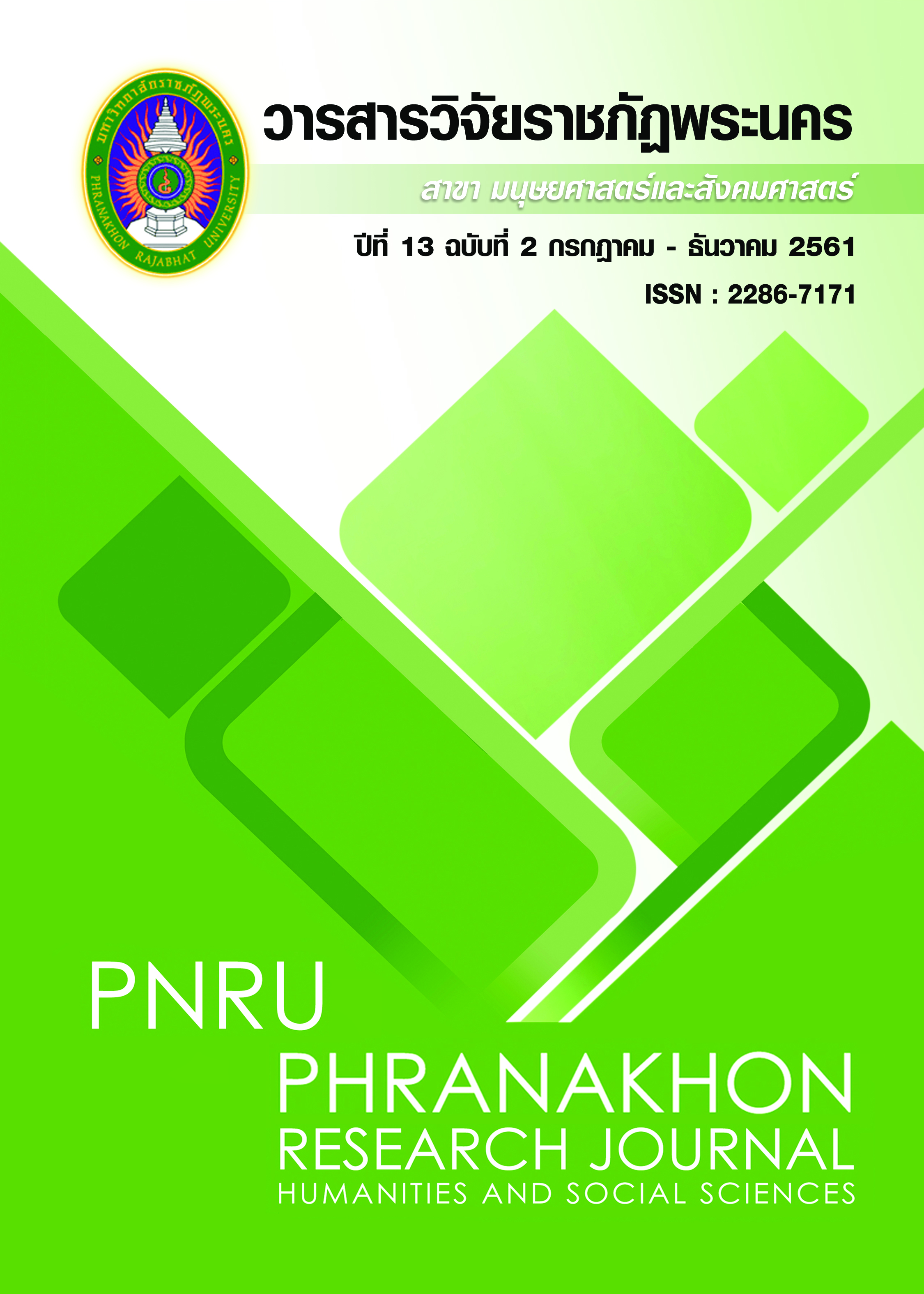THE DEVELOPMENT OF CREATIVE TOURISM ACTIVITY BASED ON A FOLK LITERATURE
Main Article Content
Abstract
The objectives of this research were to 1) study and analyze the content from folk literature (The Golden Goby or Pla Boo Thong), 2) develop creative tourism activities from folk literature, and 3) provide and evaluate creative tourism activities. The research methodology included qualitative and quantitative analysis. The instrument employed for collecting qualitative data was in-depth interviews and focus group. The data were collected from two academic people, two scholars, a member form cultural organization, and thirty-four Thais people. The research tools were in-depth interview form and the evaluation of creative tourism activities development form. The data were analyzed by using content analysis. For quantitative analysis, the data analyzed by using descriptive statistics, frequency. The research findings were follows; 1) There were twenty-nine information sources which are classified into six categories: nine books, six websites, four movies, three television dramas, three researches, and four stories on Youtube. Most of key informants were quite well-known folk literature (the golden goby or Pla Boo Thong) which was taught on the merit and gratitude. 2) There were three group activities. The first group activities were about dressed up like the Golden Goby, teaching acting and handmade souvenir. The second group activities were Thai food cooking, The painting on golden goby sculpture. The last group activities were a day trip to a place related to the Golden Goby. 3) The evaluation on the creative tourism activity development was on satisfied level in all aspects: dressed up Goby, cooking, and The painting on golden goby sculpture and a day trip to a place related to the Golden Goby.
Article Details
Each publish articles were copyright by Phranakorn Rajabhat University
Any contents which appeared in each articles in the journal were authors personal opinion. It did not relate to Phranakorn Rajabhat University and other instructors in the university. Each authors would take responsibility on their articles. If there are any mistake, the authors will take responsibility themselves
References
Office of the National Economic and Social Development Board; NESDB. (2011). The Eleventh National Economic and Social Development Plan (2012-2016). (online). Retrieved from: http://www.nesdb.go.th/ Default.aspx?tabid=395
UNESCO. (2006) . Towards Sustainable Strategies for Creative Tourism. Discussion Report of the Planning Meeting for 2008 International Conference on Creative Tourism Santa Fe, New Mexico, U.S.A. October 25-27, 2006. Retrieved from: unesdoc.unesco.org/images/0015/001598/159811E.pdf
Ministry of Culture (2013). Thai Cultural Wisdom Heritage. (online). Retrieved from: http://ich.culture.go.th/index.php/th/ich/folk-literature/253-tales/108-----m-s
Richards, G. (2010a). Creative Tourism and Local Development. In Wurzburger, R. (Ed.). Creative Tourism A Global Conversation how to provide unique creative experiences for travelers worldwide: at present at the 2008 Santa Fe & UNESCO International Conference on Creative Tourism in Santa Fe. (pp. 78–90). New Mexico. USA.
Pitoon Thongchim, Pongpachara Tarasuk and Nisachol Sakulcharnnarong. (2013). Travel to Resuscitate the Historic Routes Retracing The KingRama V in 5 Southern Province : Songkhla Phatthalung;Nakhon Si Thammarat; Trang and Satun. Sonkla: Hatyai University.
Wantana Naowan. (2013). The Development of Community-based Tourism Pattern at Bangkrasun, Bang Pa-in District, Ayutthaya Province. (online). Faculty of Management Sciences, Phra Nakhon Si Ayutthaya Rajabhat University. Search Date: 22 May 2016. Retrieved from: http://www.google.co.th/url?sa=t&rct=j&q=&esrc=s&source= web&cd=&cad=rja&uact=8&ved=0ahUKEwjolv_vg4DUAhUFMo8KHQDsCc8QFgglMAA&url=http%3A%2F%2Fmanagement.aru.ac.th%2Fctour%2Fimages%2Fpdf%2Farticle%2Farticle2.pdf&usg=AFQjCNFM19_38xHbmQ4hx_2LUTNlFSd-WQ&sig2=ZjwWI3o5j1TEM9ac9KJhpA


